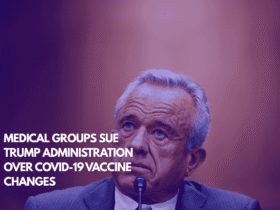The Supreme Court recently ruled in favor of President Donald Trump’s authority to dismiss heads of independent federal agencies, specifically targeting officials Gwynne Wilcox of the National Labor Relations Board and Cathy Harris of the Merit Systems Protection Board.
Both officials had argued they could only be removed “for cause” under federal law, but the Court’s decision rejected this limitation.
Executive Power Affirmed
Chief Justice John Roberts, writing for the majority, emphasized that the U.S. Constitution vests executive power in the President, giving him the right to remove executive officers without cause. The Court noted that restricting Trump’s removal power would impose greater burdens than the protections claimed by Wilcox and Harris.
The opinion clarified that this ruling does not extend to all federal positions. For example, the Federal Reserve operates under different constitutional and historical rules, due to its unique quasi-private status and long tradition dating back to the First and Second Banks of the United States.
Majority’s Reasoning
The majority opinion stated, “Because the Constitution vests the executive power in the President, he may remove without cause executive officers who exercise that power on his behalf, subject to narrow exceptions recognized by our precedents.” It also highlighted the special status of the Federal Reserve, which remains outside the scope of this decision.
Dissenting Opinions Raise Concerns
Justices Sonia Sotomayor, Elena Kagan, and Ketanji Brown Jackson strongly dissented, warning that the ruling threatens the independence of federal adjudicatory bodies and weakens important checks on presidential power.
Justice Kagan criticized the decision for overruling the established precedent from Humphrey’s Executor v. United States (1935), which limits the President’s removal power to protect independent agencies. She expressed concern that the emergency order allowing the President to remove these officials pending further review undermines judicial safeguards.
Implications for Federal Governance
This ruling significantly shifts the balance of power, granting the President broader authority to remove certain independent agency leaders. While the decision strengthens executive control, it raises questions about the future independence of federal regulatory and adjudicatory bodies.
The Court’s decision reaffirms presidential authority in some areas but leaves open the scope and limits of such power, particularly regarding agencies like the Federal Reserve that are shielded by special constitutional considerations.











Leave a Reply